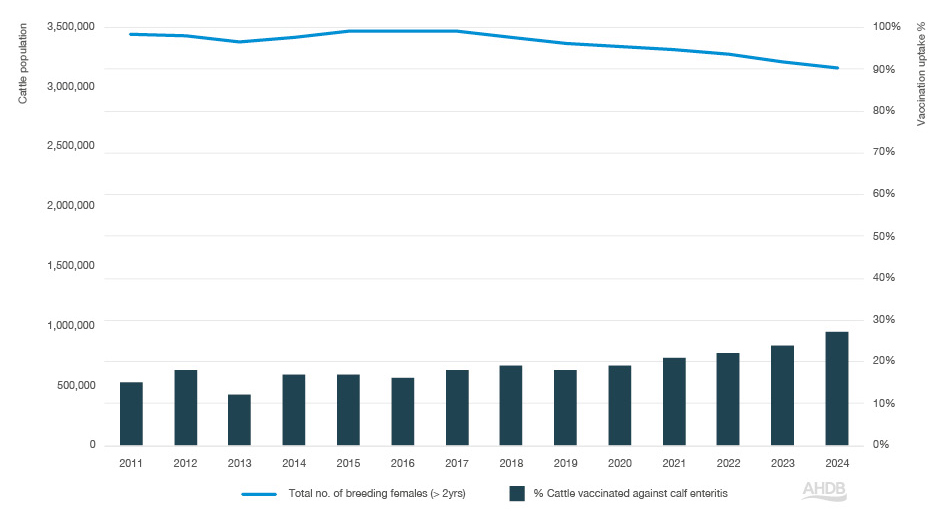- Home
- Knowledge library
- Calf enteritis vaccines in cattle
Calf enteritis vaccines in cattle
Calf enteritis, or calf scour, is a common problem found on most cattle farms in the UK. It can be a major cause of poor growth and calf mortality.
The severity of the disease depends upon the protection that a calf receives from colostrum within the first six hours of life.
Several vaccines have been developed to actively immunise cattle against pathogens, which commonly cause calf enteritis, to boost serological and colostral antibody production.
The antibodies in colostrum provide passive immunity to the newborn calf.
The cost of a calf scour outbreak is estimated to be £58 per calf (ADAS, 2012).
Eight vaccines for calf enteritis have been marketed in the UK:
- Bovigen Scour contains inactivated E. coli and inactivated Rotavirus and Bovine Coronavirus
- DiarrVac RCE contains inactivated Rotavirus, inactivated Bovine Coronavirus and inactivated E. coli
- Fencovis contains inactivated E. coli, inactivated Rotavirus and inactivated Bovine Coronavirus
- Lactovac contained inactivated E. coli and inactivated Rotavirus and Bovine Coronavirus
- Bovilis® Rotavec® Corona Emulsion contains inactivated E. coli F5 and inactivated Rotavirus and Bovine Coronavirus
- Trivacton 6 contained E. coli and inactivated Rotavirus and Bovine Coronavirus
- Bovilis Cryptium® contains Cryptium parvum glycoprotein
- Rotacur contains inactivated E. coli and inactivated Rotavirus and Bovine Coronavirus
Assumptions
Numerator
The number of doses of vaccine administered has been calculated by multiplying the number of packs sold by the number of doses per pack.
It was assumed that each pregnant animal received one dose per year.
Denominator
It was assumed that only female breeding animals were vaccinated and that these vaccines would only be given to pregnant female breeding cattle.
As most cattle calve down after 24 months and the vaccine is given in late pregnancy, only female cattle over two years of age were included in the calculation.
Vaccination uptake
The uptake of calf enteritis vaccines is the lowest among all the categories of cattle vaccine in this report.
However, in 2024, vaccine uptake was 27% (up from 24% in 2023), which is the highest it has ever been, demonstrating a continued increase in uptake.
Figure 1. Percentage of cattle vaccinated against calf enteritis


